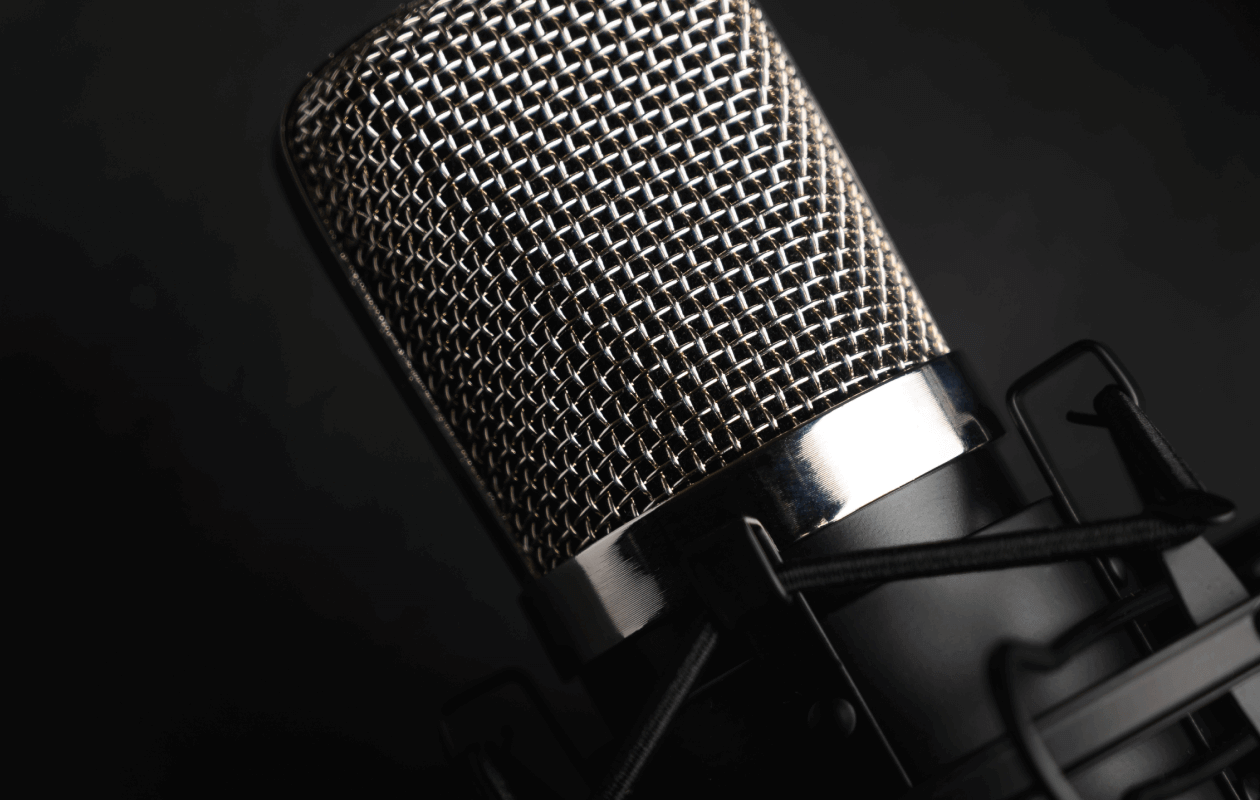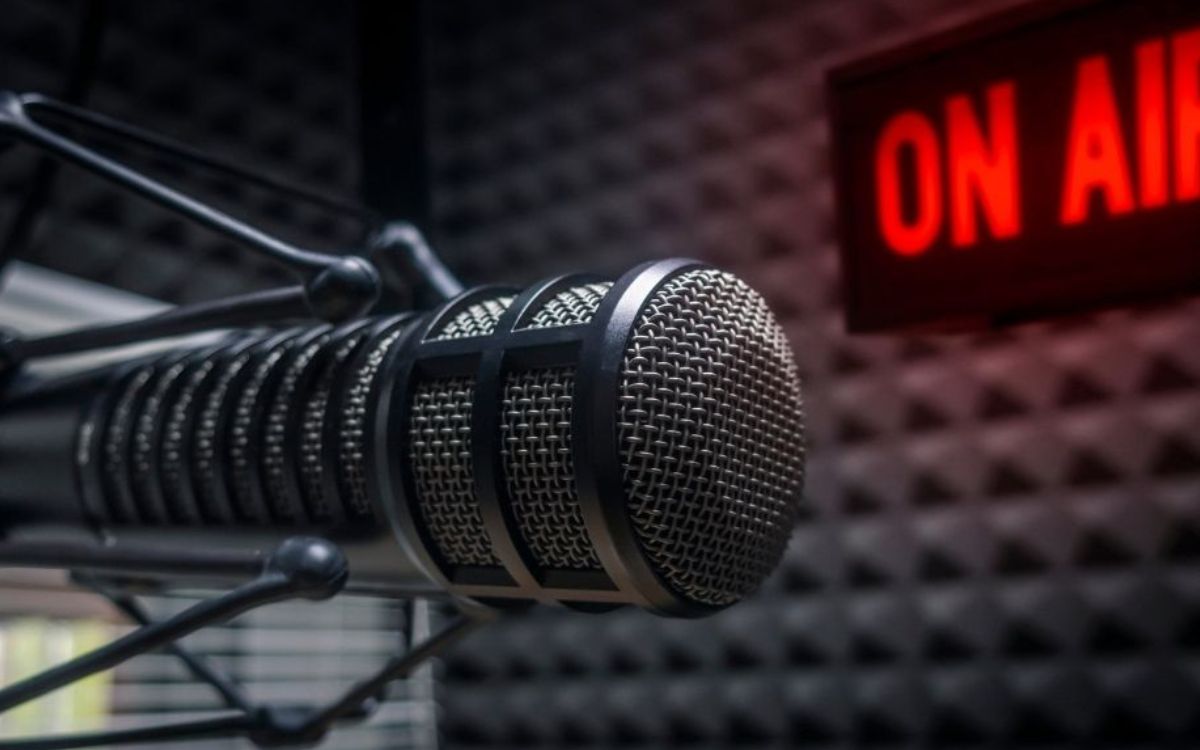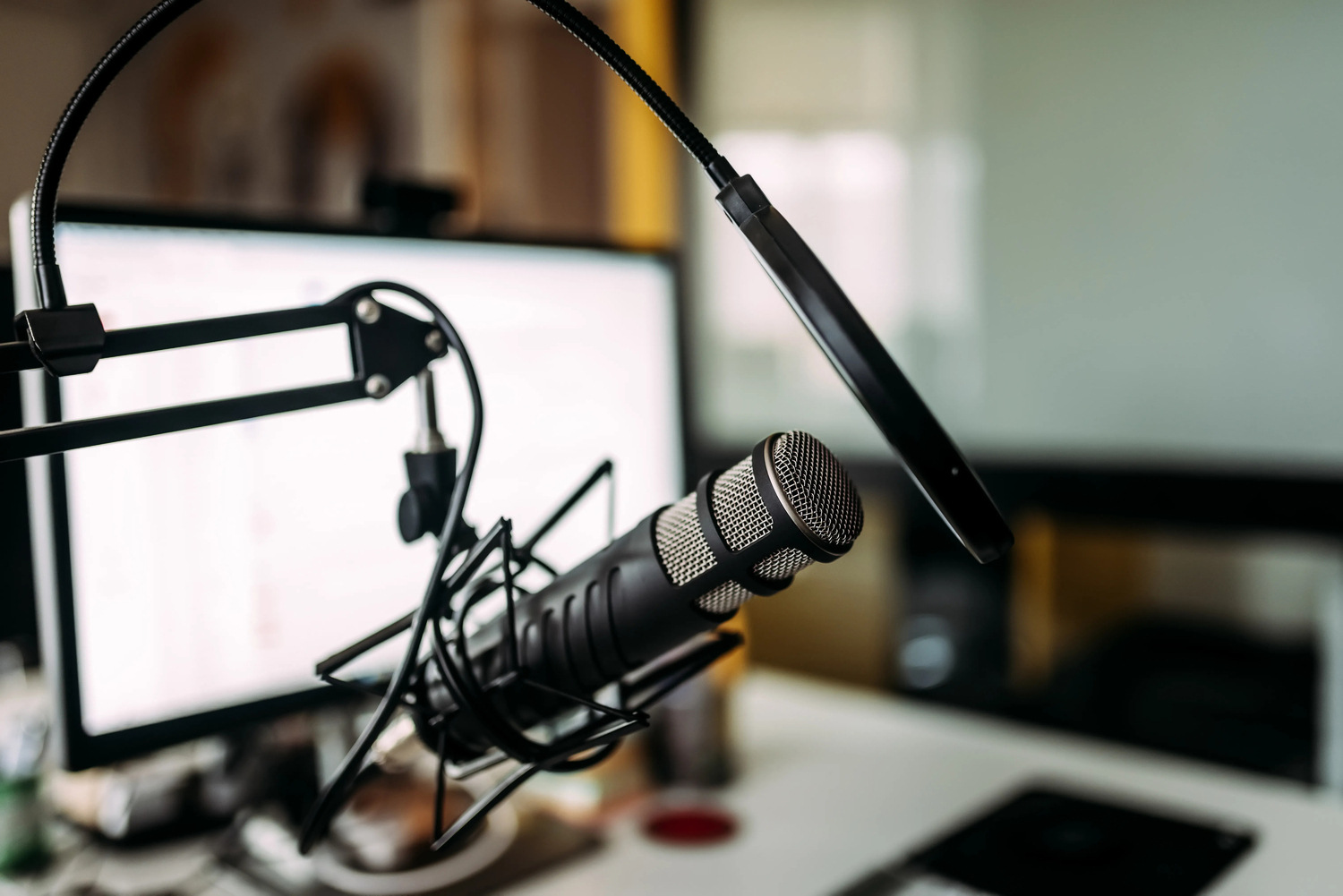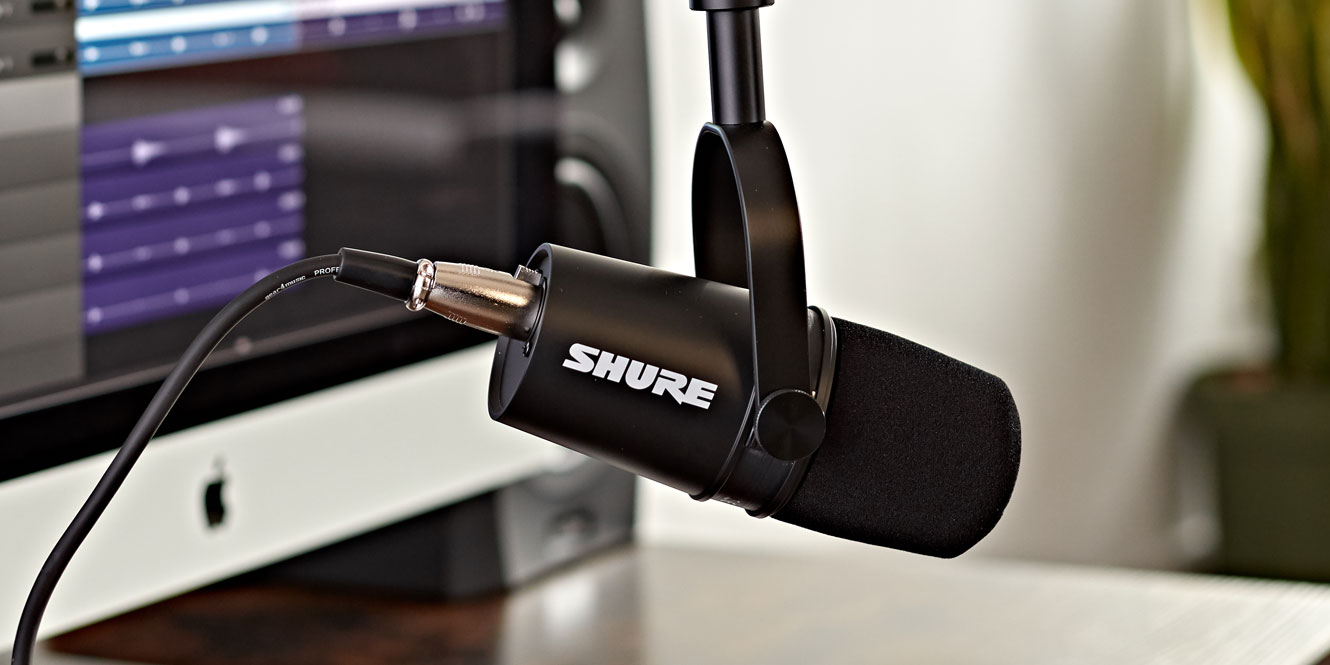Home>Devices & Equipment>Microphone>What Is An XLR Microphone
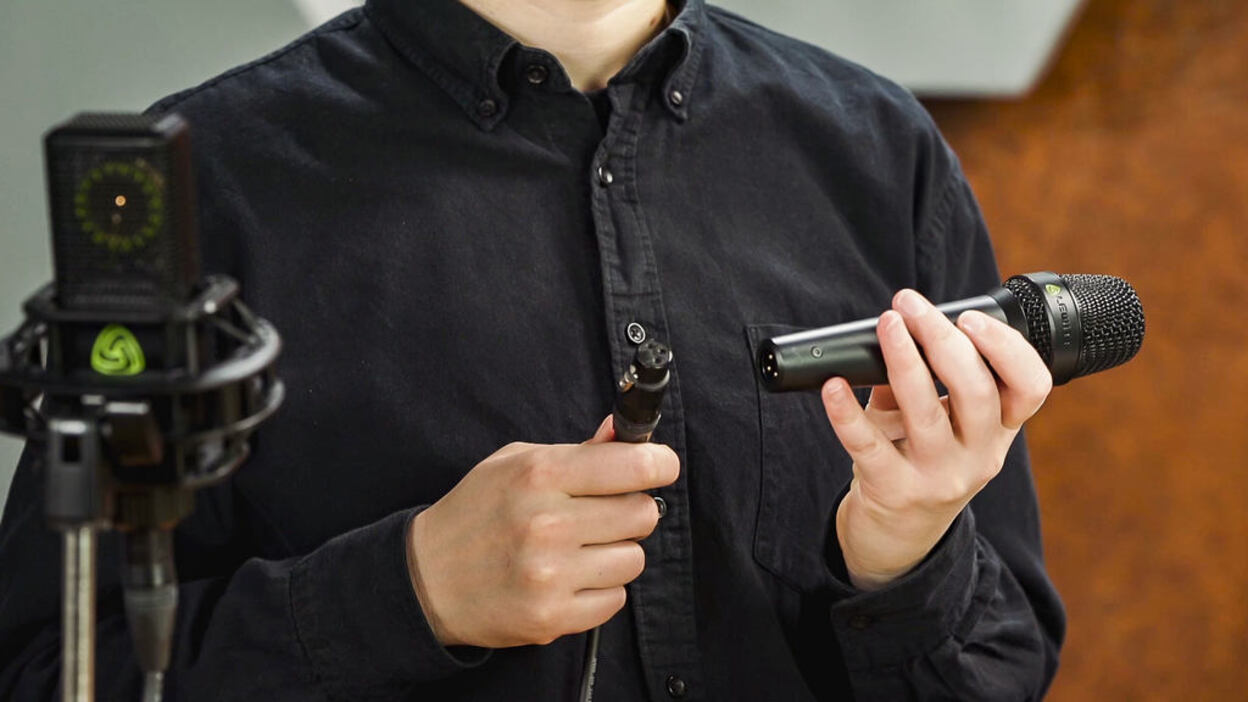

Microphone
What Is An XLR Microphone
Modified: March 12, 2024
Learn about the uses and benefits of XLR microphones and how they can enhance your sound quality. Find out why XLR microphones are essential for professional audio recording.
(Many of the links in this article redirect to a specific reviewed product. Your purchase of these products through affiliate links helps to generate commission for AudioLover.com, at no extra cost. Learn more)
Table of Contents
Introduction
Introduction
XLR microphones are essential tools in the audio recording industry, known for their exceptional sound quality and reliability. These microphones are widely used in professional settings such as recording studios, live sound reinforcement, and broadcasting due to their balanced audio connections and ability to capture high-fidelity sound. Understanding the intricacies of XLR microphones is crucial for anyone involved in audio production, from musicians and sound engineers to podcasters and content creators.
These microphones are named after the "X Series" connector originally developed by Cannon Electric in the mid-20th century. The "L" and "R" stand for "locking" and "rubber," respectively, referring to the secure and insulated connection provided by the connector. XLR microphones have since become the industry standard for professional audio applications, offering numerous advantages over other types of microphones.
In this comprehensive guide, we will delve into the history, anatomy, functionality, and common uses of XLR microphones. Additionally, we will explore the advantages and disadvantages of these microphones, providing valuable insights for both aspiring and seasoned audio professionals. By the end of this article, you will have a profound understanding of XLR microphones and their pivotal role in the world of audio recording and production.
History of XLR Microphones
The history of XLR microphones dates back to the mid-20th century when the need for a reliable and high-quality audio connector became increasingly apparent in professional audio applications. The XLR connector, originally developed by Cannon Electric, was introduced as part of the "X Series" of connectors. This series included a variety of multi-pin connectors, with the XLR connector standing out for its balanced audio capabilities.
One of the key developments that propelled the XLR connector to prominence was its ability to provide balanced audio connections. This balanced connection method allowed for the transmission of audio signals over long distances without significant loss or degradation of quality, making it ideal for professional audio applications such as studio recording and live sound reinforcement.
Over time, the XLR connector became widely adopted in the audio industry, leading to the development of microphones that utilized this robust and reliable connection. As a result, XLR microphones gained a reputation for their superior sound quality, durability, and resistance to interference, setting them apart from other microphone technologies.
With the rise of recording studios, live music performances, and broadcasting, the demand for high-quality microphones with dependable connectivity surged. XLR microphones quickly became the go-to choice for professionals seeking uncompromising audio performance, further solidifying their position as an industry standard.
Today, the legacy of XLR microphones continues to thrive, with advancements in technology and manufacturing processes further enhancing their performance and versatility. From classic studio condenser microphones to dynamic stage microphones, the XLR connection remains a hallmark of professional audio equipment, carrying forward a rich history of innovation and excellence.
Anatomy of an XLR Microphone
Understanding the anatomy of an XLR microphone is essential for anyone looking to grasp the inner workings of these professional audio devices. While XLR microphones come in various shapes and sizes, they typically share common components that contribute to their exceptional performance and versatility.
1. Microphone Capsule: At the heart of every XLR microphone is the microphone capsule, which contains the diaphragm and transducer elements responsible for converting sound waves into electrical signals. The quality and design of the microphone capsule greatly influence the overall sound characteristics of the microphone.
2. XLR Connector: As the namesake of the microphone, the XLR connector plays a crucial role in establishing a secure and balanced connection between the microphone and audio equipment. The three pins of the XLR connector carry the balanced audio signals, ensuring optimal signal integrity and noise rejection.
3. Housing and Grille: The housing of an XLR microphone serves as a protective enclosure for the internal components, while the grille acts as a barrier that helps minimize unwanted noise and plosives from reaching the microphone capsule. The design of the housing and grille can impact the microphone’s frequency response and directional characteristics.
4. Internal Circuitry: XLR microphones feature internal circuitry that may include preamplifiers, impedance converters, and other electronic components designed to optimize the microphone’s performance. These components play a crucial role in shaping the microphone’s output signal and ensuring compatibility with various audio devices.
5. Polar Pattern Switch: Many XLR microphones offer selectable polar patterns, allowing users to adjust the microphone’s sensitivity to sound from different directions. Common polar patterns include cardioid, omnidirectional, and figure-8, each offering unique characteristics suitable for specific recording and sound reinforcement applications.
6. Shock Mount and Mounting Hardware: To minimize handling noise and vibrations, XLR microphones are often equipped with shock mounts or integrated shock absorption mechanisms. Additionally, mounting hardware such as microphone clips or stands provide flexibility in positioning the microphone for optimal sound capture.
By familiarizing oneself with the anatomy of an XLR microphone, audio professionals and enthusiasts can gain a deeper appreciation for the intricacies of these versatile audio tools, empowering them to make informed decisions when selecting and utilizing XLR microphones for various recording and performance scenarios.
How XLR Microphones Work
XLR microphones operate on the principle of transducing acoustic energy (sound waves) into electrical signals that can be amplified, recorded, or processed by audio equipment. The process by which XLR microphones work involves several key stages that collectively contribute to their ability to capture and reproduce sound with exceptional fidelity and clarity.
1. Sound Capture: When sound waves reach the microphone, they cause the diaphragm within the microphone capsule to vibrate. This vibration is then converted into an electrical signal through the use of transducer elements such as dynamic coils, condenser capsules, or ribbon elements, depending on the microphone’s design.
2. Signal Conversion: The electrical signal generated by the microphone capsule is then routed through the internal circuitry of the microphone, where it may undergo amplification, impedance conversion, and signal conditioning. This process helps to optimize the signal for transmission and ensures compatibility with a wide range of audio devices.
3. Balanced Audio Transmission: The balanced audio signal is then transmitted through the XLR connector, which features three pins carrying the positive, negative, and ground signals. This balanced configuration minimizes electromagnetic interference and noise, allowing for clean and reliable signal transmission over long cable runs.
4. Connection to Audio Equipment: Once the balanced audio signal exits the XLR microphone, it can be connected to audio interfaces, mixing consoles, preamplifiers, or other audio devices equipped with XLR inputs. The balanced nature of the signal ensures optimal signal integrity and noise rejection, contributing to high-quality audio reproduction.
5. Signal Processing and Amplification: The electrical signal from the XLR microphone may undergo further processing and amplification within audio equipment, such as equalization, dynamics processing, and volume control. This allows users to tailor the sound to their preferences and optimize it for specific applications.
By understanding the inner workings of XLR microphones, audio professionals and enthusiasts can appreciate the meticulous engineering and design that goes into creating these essential tools for audio capture and reproduction. The balanced audio transmission, signal conversion, and compatibility with a wide range of audio equipment make XLR microphones a cornerstone of professional audio production and reinforcement.
Common Uses of XLR Microphones
XLR microphones are versatile audio devices that find application in a wide array of professional settings, catering to the diverse needs of audio production, live performances, broadcasting, and more. Their balanced audio connections, high-fidelity sound capture, and robust construction make them indispensable tools for capturing and reproducing audio in various scenarios.
1. Studio Recording: XLR microphones are a staple in recording studios, where their ability to capture detailed and nuanced sound makes them ideal for recording vocals, acoustic instruments, drum overheads, and more. Their balanced audio connections and low noise floor contribute to pristine recordings with minimal interference.
2. Live Sound Reinforcement: In live music performances, XLR microphones are commonly used for miking vocals, instruments, and amplifiers. Their durability, resistance to interference, and compatibility with professional audio equipment make them reliable choices for delivering exceptional sound quality in live settings.
3. Broadcast and Podcast Production: XLR microphones play a crucial role in broadcasting, podcasting, and voiceover work, where clarity and intelligibility are paramount. Whether in radio studios, podcasting setups, or television production, XLR microphones excel at capturing articulate speech and vocal performances.
4. Field Recording and Location Sound: For capturing sound on location, such as in film production, documentary work, or environmental recording, XLR microphones offer the fidelity and flexibility needed to capture authentic and immersive audio. Their rugged construction and compatibility with portable audio recorders make them well-suited for field applications.
5. Instrument and Vocal Amplification: XLR microphones are commonly used for miking instruments and vocal amplifiers in live and studio settings. Their ability to faithfully reproduce the tonal characteristics of instruments and amplifiers, combined with their balanced audio connections, makes them essential for achieving high-quality sound reinforcement and recording.
6. Conference and Public Address Systems: In corporate and public speaking environments, XLR microicrophones are utilized for delivering clear and intelligible speech through conference systems and public address setups. Their balanced audio connections and noise rejection capabilities ensure that speech is conveyed with precision and clarity.
Overall, XLR microphones are integral to the fabric of professional audio production, offering unparalleled versatility, reliability, and sonic performance across a wide spectrum of applications. Their enduring presence in recording studios, live venues, broadcast facilities, and beyond underscores their indispensable role in shaping the sonic landscape of diverse industries.
Advantages and Disadvantages of XLR Microphones
XLR microphones boast a range of advantages that contribute to their widespread adoption in professional audio environments. However, they also come with certain limitations that are important to consider when evaluating their suitability for specific applications.
Advantages:
- High-Quality Sound: XLR microphones are renowned for their ability to capture high-fidelity audio with exceptional detail and clarity, making them indispensable for critical recording and sound reinforcement applications.
- Balanced Audio Connections: The balanced nature of XLR connections minimizes electromagnetic interference and noise, ensuring clean and reliable signal transmission over long cable runs, making them ideal for professional audio setups.
- Durability and Reliability: XLR microphones are built to withstand the rigors of professional use, featuring robust construction and secure connectors that contribute to their long-term reliability in various environments.
- Compatibility: XLR connectors are widely supported across audio equipment, including mixing consoles, audio interfaces, preamplifiers, and other professional gear, providing seamless integration and interoperability.
- Flexibility and Versatility: With a wide range of microphone types and polar patterns available in XLR format, users can select microphones tailored to specific recording scenarios and sonic requirements, offering versatility in capturing different sound sources.
Disadvantages:
- Physical Bulk: XLR microphones, particularly large-diaphragm condenser models, can be relatively bulky and heavy, which may limit their portability and ease of handling in certain recording or performance situations.
- Power Requirements: Some XLR microphones, such as condenser microphones, require phantom power to operate, necessitating the availability of compatible power sources, which may not be universally accessible in all setups.
- Cost: High-quality XLR microphones often come with a significant price tag, which may pose budgetary constraints for individuals or organizations seeking professional-grade audio capture solutions.
- Complexity for Novice Users: Understanding and properly utilizing XLR microphones, including their connectivity and polar pattern selection, may present a learning curve for individuals new to professional audio equipment.
While the advantages of XLR microphones position them as indispensable tools for professional audio production, it is important to weigh these benefits against the associated limitations to determine the most suitable microphone solutions for specific recording, performance, and broadcasting requirements.
Conclusion
In conclusion, XLR microphones stand as enduring pillars of excellence in the realm of professional audio recording, production, and sound reinforcement. With a rich history rooted in innovation and a legacy of exceptional performance, these microphones continue to play a pivotal role in shaping the sonic landscape across diverse industries.
From the balanced audio connections that ensure pristine signal transmission to the meticulous engineering that underpins their high-fidelity sound capture, XLR microphones embody a commitment to uncompromising quality and reliability. Their versatility in capturing vocals, instruments, and environmental sound, coupled with their compatibility with a wide range of audio equipment, makes them indispensable tools for audio professionals and enthusiasts alike.
As technology advances and new innovations emerge, the timeless appeal of XLR microphones endures, standing as a testament to their enduring relevance in an ever-evolving audio landscape. Whether in recording studios, live venues, broadcast facilities, or remote field applications, XLR microphones continue to set the standard for sonic excellence and creative expression.
In embracing the advantages and acknowledging the limitations of XLR microphones, audio professionals and enthusiasts can harness the full potential of these remarkable tools, leveraging their capabilities to capture, create, and convey audio with unparalleled precision and artistry.
Ultimately, the legacy of XLR microphones serves as a testament to the power of innovation, craftsmanship, and the pursuit of sonic perfection, ensuring that they remain indispensable companions in the journey of bringing sound to life in its purest form.

